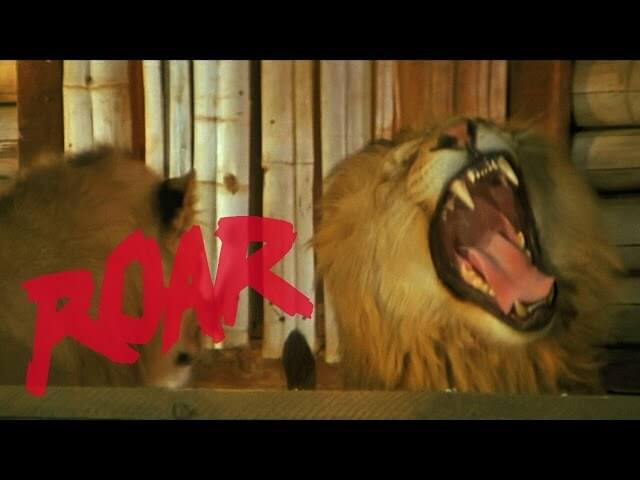When you let actual lions direct your movie, expect to be mauled

Every day, Watch This offers staff recommendations inspired by a new movie coming out that week. This week: It’s Pets Week here at The A.V. Club, so we’re recommending movies about the sometimes sweet, sometimes weird, always meaningful relationship between people and animals.
Roar (1981)
Besides an argument against the private ownership of wild animals, Roar is an object lesson in what happens when you give one person entirely too much money. Inspired by the lions he and his wife, actress Tippi Hedren, encountered while shooting in Africa, producer Noel Marshall began collecting big cats (it was the early ’70s, things were different then), eventually acquiring so many that his family was forced to move from Beverly Hills to a ranch 40 miles north of Los Angeles. There, they raised their children—including Hedren’s daughter, Melanie Griffith—among lions and tigers, which they treated like oversized house cats. The whole thing was documented in a 1971 Life magazine spread, but that was before things got really bizarre. That was before The Exorcist.
Marshall’s dream was to produce a movie starring his big happy family of deadly predators, a film that would raise awareness on the overhunting of big cats in the wild. As an established Hollywood producer, Marshall was initially able to secure funding for his passion project. But after the first few rounds of bloody maulings (more on that later), Marshall’s financiers pulled out of the production. That would have been the end of Roar, were Marshall not flush with cash from another of his recent projects, executive producing The Exorcist. Left without any other options, the couple began funneling all that pea-soup money into what had become Marshall’s singular obsession, a production that ballooned from a six-month, $3 million shoot to an 11-year, $17 million ordeal.
The main reason production took so long is that virtually every member of the cast and crew suffered animal-related injuries during the production—more than 70 attacks total—necessitating frequent stops. Cinematographer Jan De Bont (who would go on to direct Speed and Twister) was scalped by a lion, and needed over 120 stitches on his head; Griffith was mauled, an attack that required facial reconstructive surgery and, shockingly, can be seen in the final cut of the movie; Marshall was bitten so many times he was hospitalized for gangrene. A flood washed away the set, temporarily loosing 28 wild cats into the California countryside. Crew members began whispering that Roar had absorbed “the curse of The Exorcist” by association.
